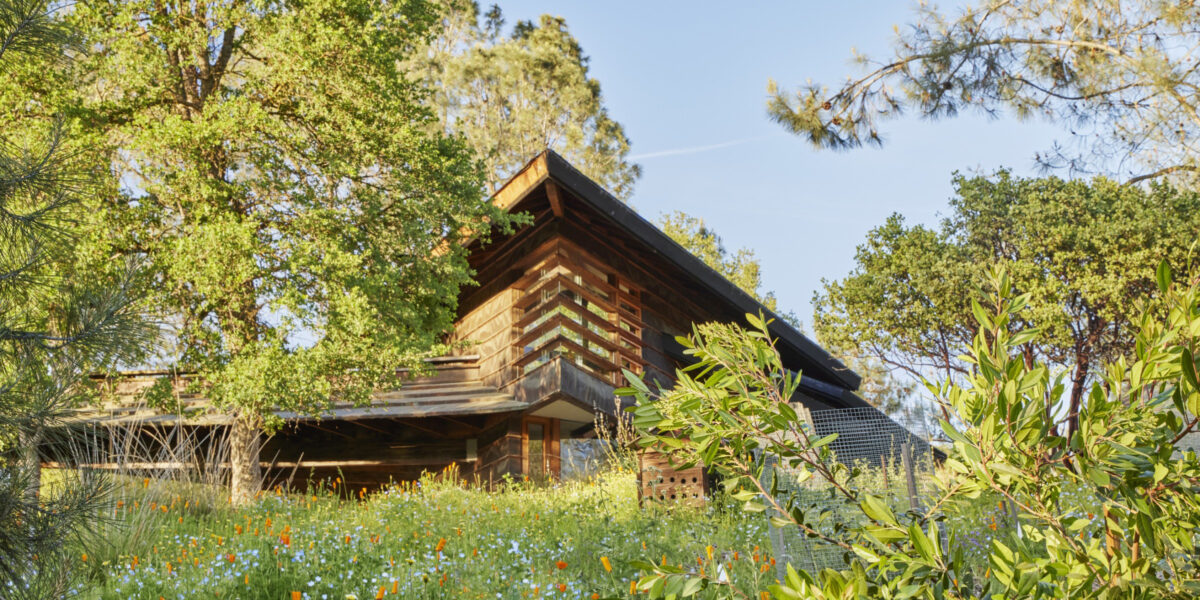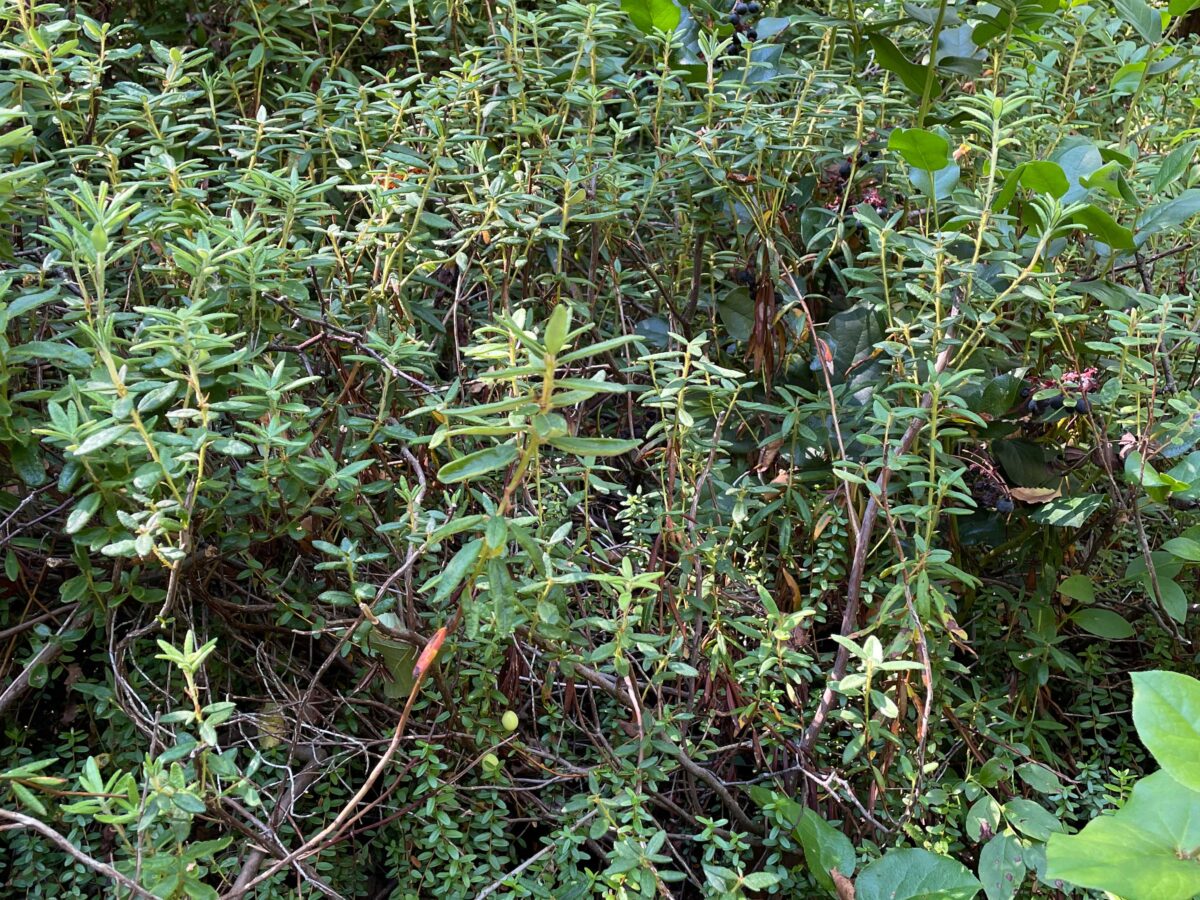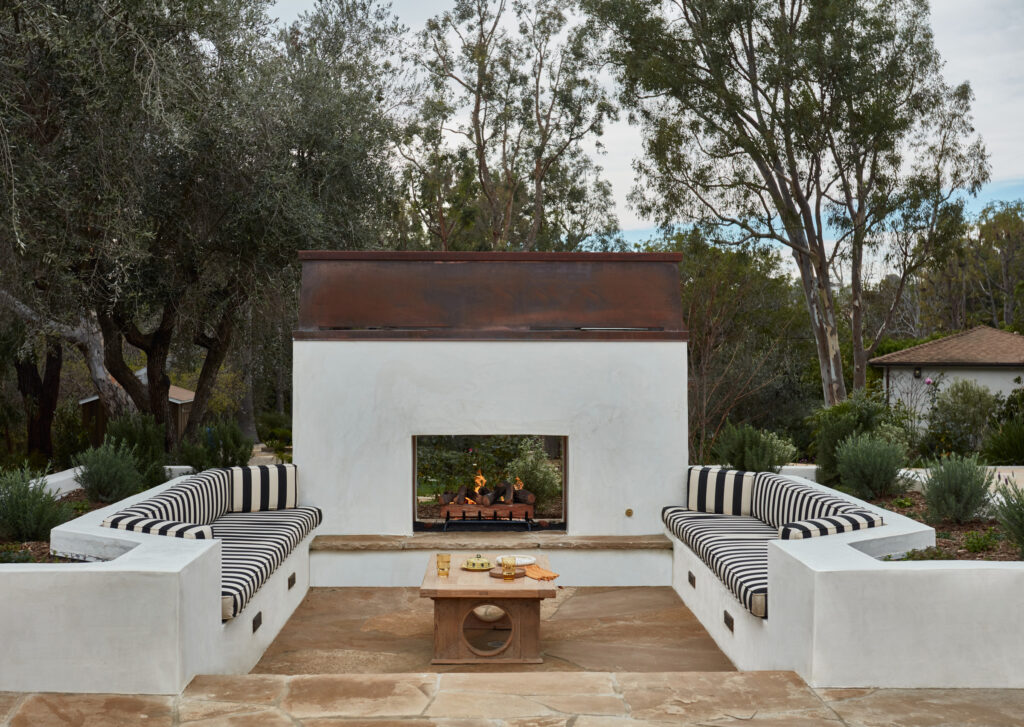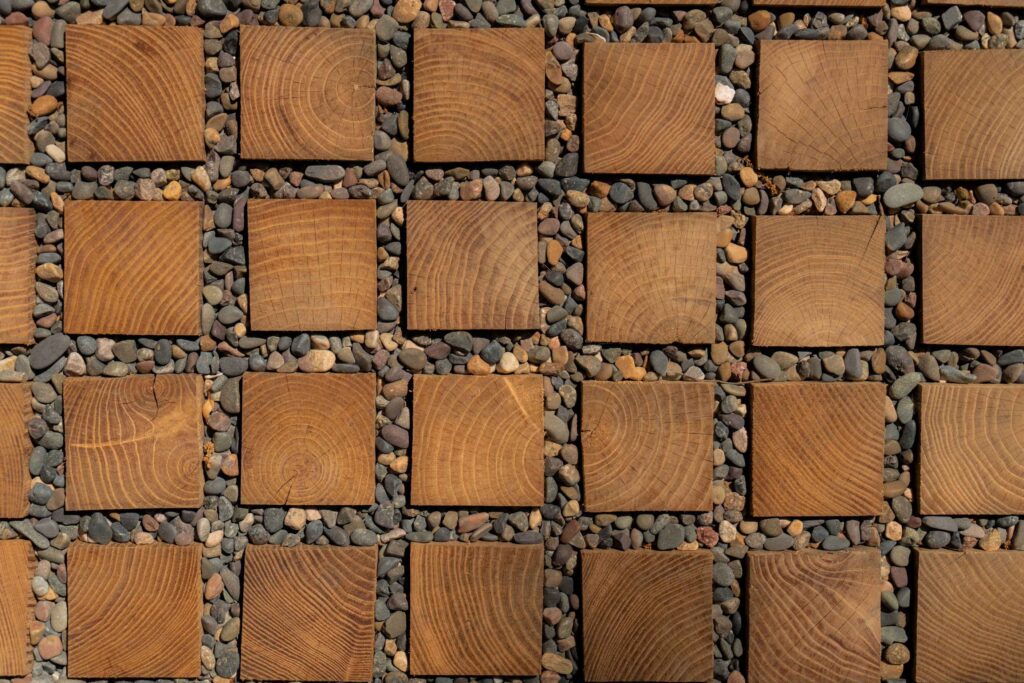
The 10 Garden Trends That Will Be Huge in 2025
From climate-adaptable planting to hunt-and-gather foraging gardens, these trends are set to take root.

Terremoto’s Coarsegold project. Photo by Caitlin Atkinson.
As we step into 2025, the garden is transforming into more than just a backyard—it’s a space for resilience, creativity, and connection. This year’s trends bring inspiring solutions for modern challenges, from climate-adaptable plantings and foraging gardens to vibrant pops of teal and community-focused spaces. Whether you’re reimagining your garden with natural materials, creating a wellness retreat, or diving into the art of container-scaping, these ideas will inspire you to cultivate beauty, sustainability, and joy. Let’s dig into the trends that are set to redefine outdoor living in the year ahead!
1. Wellness Spaces: Designing for Relaxation and Respite

Courtesy of Collecting Flowers
Wellness gardens are emerging as tranquil retreats, designed to nurture relaxation and calm within the landscape. The team at Collecting Flowers explains, “When thinking about a space for wellness, we first consider how you’ll move through the space by allowing the garden to guide you, creating a destination accessible by way of lush greenery and soft groundcover underfoot.”
Privacy and serenity are central to these designs. Nooks framed by plants like Pittosporum ‘Silver Sheen’, Acacia iteaphylla, or Grevillea provide seclusion while maintaining an open, airy feel. Elevation changes—whether a recessed spa or an elevated nook—add intrigue and intimacy. Thoughtful details like deep cedar or Monterey cypress steps that double as seating blur the lines between lounging and movement. Groundcovers such as wooly thyme or Dymondia enhance the experience, offering soft, durable paths that invite bare feet and enhance a sunny spot for relaxing. With these touches, your garden becomes a true oasis for unwinding and recharging.
2. Hunt-and-Gather Foraging Gardens: A Feast for All Ages

Sasha Gulish
Foraging gardens are redefining edible landscapes, combining playful exploration with purposeful design. Christian Douglas of Christian Douglas Design champions their charm: “Foraging is one of the easiest and most fun ways to add edible plants to your garden. It’s less work, full of surprises, and kids love it. Want little ones to know where their food comes from? Plant more forage species.”
Think beyond traditional rows. Berry shrubs like blueberries and strawberries thrive when planted along paths or atop low retaining walls for ergonomic picking. Herbs such as thyme, rosemary, and marjoram tuck beautifully into these designs, adding culinary delight for the family cook. For young adventurers, Douglas suggests creating a treasure hunt experience by tucking berries into play-friendly spots.
Fruit trees also shine in foraging gardens. Keep lower branches for easy picking, or train thornless blackberry vines, grapes, or kiwi onto pergolas or espalier forms for both beauty and access. These gardens not only nourish the body but also spark curiosity and connection to nature.
3. Climate Adaptable Gardens: Restoring with Community and Patience

Caitlin Atkinson
The trend of climate-adaptable gardens is about blending ecological restoration with thoughtful, sustainable design, especially in challenging environments. The team at Terremoto reflects this ethos in their Coarsegold project. Situated in the Sierra Nevada foothills, the project diverged from traditional residential design by embracing a wild, restoration-focused approach that celebrated the natural landscape.
“Since both our office and the client are based in Los Angeles, we engaged a local horticulturalist for knowledge of regional plant species and restoration strategies,” they explain. With a limited budget, the project leaned heavily on community involvement. The homeowner played an active role, propagating plants on-site and sowing seeds. The landscape became a living example of patience, stewardship, and community collaboration.
This approach not only highlights the importance of using native, climate-appropriate plants but also the benefits of engaging local communities in the care and creation of resilient, sustainable gardens. The result is a landscape that thrives naturally, reflecting the values of ecological restoration and environmental consciousness.
4. Rock Gardens: A Resurgence in Functional Beauty

Andrea Doonan
Rock gardens are making a stylish comeback, blending rugged beauty with eco-friendly functionality. Brad Lefkowits of San Diego-based Waves Landscape Design champions their versatility: “Rocks work both functionally and aesthetically, helping features like water capture and topography blend seamlessly into a garden. They bring a natural feel and organic chaos to an otherwise highly controlled environment.”
Rockeries and screes are perfect for stabilizing swales, creating natural seating, or inviting exploration. Their irregular edges soften modern lines while providing niches for native plants. “Tuck a native Dudleya into the cracks between two boulders,” Lefkowits suggests, “or line a swale with Juncus and Anemopsis to bring the garden to life.”
Ideal for drought-tolerant landscapes, rock gardens pair beauty with purpose, offering a habitat for wildlife and a dynamic, low-maintenance aesthetic. Whether as a focal point or a cohesive element, rocks ground the landscape while creating space for nature to thrive.
5. Creative and Hobby Gardens: Spaces for Expression and Connection

Courtesy of Viola Gardens
Gardens can be more than functional—they can serve as sanctuaries for creativity, self-expression, and connection. Jessica Viola of Viola Gardens approaches landscape design as living art, blending personal identity with the natural world. “Whether it’s a yoga platform, a labyrinth, an artist’s nook, or a food forest,” she says, “each garden is as unique as the individual it serves, mapping who we are and how we like to enjoy life in the garden.”
Through careful listening to the land and intuitive design, Viola crafts spaces that inspire awe and invite interaction. Her gardens honor natural processes while incorporating modern regenerative practices, such as no-till soil care, native plants, and water catchment systems.
These dynamic landscapes become more than a backdrop; they are evolving spaces that spark creativity and forge deeper connections. By observing nature’s patterns, Viola believes, we can nurture both the Earth and ourselves, creating spaces that are vibrant, meaningful, and alive with purpose.
6. Living Fences: The Vibrant Alternative to Traditional Boundaries

Christina Chung
Say goodbye to stark walls and rigid fences and hello to lush, multifunctional living fences. According to biologist Christina Chung of Fluent Garden, shrubs are the ultimate garden multitaskers—offering privacy, buffering noise, and providing seasonal interest with flowers, fruit, and foliage. “Try an evergreen hedgerow of sea buckthorns, strawberry tree, and rosemary for a dry, sunny spot,” she advises, “or plant currant, gooseberries, hardy fuchsia, and serviceberries for fruit and flowers in shadier areas.”
Living fences also serve as a haven for wildlife, attracting pollinators and providing shelter for birds. To create a natural, layered look, Chung recommends taking cues from nature: “Walk in nature and notice how shrubs knit into the landscape when allowed to spread.” For a personalized touch, experiment with mixing heights, shapes, and textures.
Whether you’re planting a low edible hedge of blueberries and salal or crafting a tall evergreen screen, a living fence can transform your garden into a vibrant, connected space that feels alive and purposeful.
7. Spaces for Community: Designing Gardens to Connect

Michael Clifford
Community-focused garden design is flourishing, and Los Angeles-based Aaha Studio exemplifies this trend with their philosophy of preserving and integrating existing landscape features. By anchoring outdoor spaces around natural elements like a California oak or a sculptural courtyard tree, Aaha Studio creates visually cohesive environments that foster connection between people and nature. Natural materials and tones further enhance the flow between the built and natural worlds, making these spaces inviting hubs for gathering.
Pro Tip: Identify key features in your yard—like an existing tree or native greenery—and design around them to create outdoor “rooms.” Similar to interior spaces, each area can serve a distinct purpose, incorporating seating, lighting, and natural elements. Choosing materials and textures that echo the surrounding environment will help craft an outdoor space that feels cohesive, welcoming, and deeply connected.
8. Teal: The Color Trend Making Waves in the Garden

Courtesy of the Sunset Plant Collection
Teal is having a moment in garden design, bridging fantasy and reality with its serene Caribbean blues, expansive sky tones, and the immersive depth of virtual worlds. This bold, synthetic hue aligns with wellness trends, offering a calming yet sophisticated effect. Teal’s versatility shines in both statement pieces and subtle accents, pairing beautifully with shades of blue, green, brown, orange, and gold.
For garden plants that embody this trend, look no further than the Sunset® Plant Collection’s Skyscraper® Senecio, Coolvista™ Dianella, and Clarity Blue™ Dianella, along with the ethereal ‘Beyond Blue’ Fescue. These blue-hued plants complement teal containers or can anchor your garden’s modern palette with ease.
9. Natural Elegance: Eco-Friendly Materials Transform Garden Design

Courtesy of ORCA Living
“Garden floors will become more permeable and reflective of the native soil,” predicts Los Angeles studio ORCA Living, as homeowners trade manicured lawns and broken concrete for sustainable alternatives. ORCA’s innovative approach includes sourcing pavers made from local clay, recycled block, and black locust wood, crafting garden surfaces that prioritize both function and beauty. Pairing these materials with drought-tolerant groundcovers that need less water is not only eco-savvy but also elevates the garden’s design, blending natural textures with sustainability for a truly modern outdoor space.
10. Container-Scaping: A Trend That Brings Bold Style to Your Garden

Michael Clifford
Container-scaping is transforming patios and outdoor spaces with bold planters and architectural plantings, offering both drama and personality. Celebrity landscape designer Stephen Block of Inner Gardens likens containers to “jewelry” for the garden, emphasizing fewer, larger planters to create striking focal points. Vintage-inspired pots with patinas or textured finishes add timeless charm, while bold plants like Brachychiton rupestris or Cussonia spicata provide sculptural intrigue. Whether outdoors or on tabletops indoors, container-scaping thrives on wabi-sabi principles—embracing imperfect, aged materials to tell a story while blending beauty and functionality.
